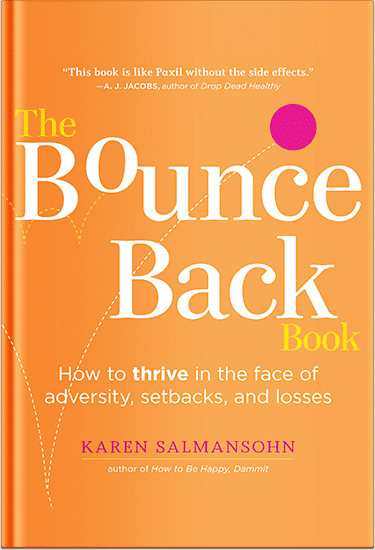 Selecting the right online math classes for elementary students can significantly impact their educational journey. As digital learning continues to evolve, parents and educators face a wide array of options. The best online math classes for elementary students combine engaging content, adaptive learning technology, and expert instruction to meet individual needs.
Selecting the right online math classes for elementary students can significantly impact their educational journey. As digital learning continues to evolve, parents and educators face a wide array of options. The best online math classes for elementary students combine engaging content, adaptive learning technology, and expert instruction to meet individual needs.
Quality programs often incorporate interactive elements like games, quizzes, and rewards to maintain student interest. They also provide immediate feedback and progress tracking, allowing children to learn at their own pace. Many top-rated platforms offer comprehensive curriculum aligned with educational standards, ensuring students build a strong foundation in key mathematical concepts.
I am sharing about this topic of best online math classes for elementary students because I am a Master Mindset Coach, with about 2 million books sold globally.
Plus I founded a groundbreaking and therapist recommended video course called The Anxiety Cure.
I love to help people to live their best, most successful lives.
When choosing online math tutoring for elementary students, consider factors such as the program’s ability to adapt to different learning styles, the qualifications of the instructors, and the level of parent involvement required. Look for platforms that offer trial periods or sample lessons to assess their suitability for your child’s needs and preferences.
Key Takeaways
- Effective online math classes combine engaging content, adaptive technology, and expert instruction
- Quality programs offer interactive elements, immediate feedback, and progress tracking
- Consider learning style compatibility, instructor qualifications, and parent involvement when selecting a program
Identifying Quality Math Curriculum and Instructional Strategies
A strong math curriculum combines engaging content with effective teaching methods. Key factors include alignment with standards, use of interactive tools, and adaptability to different learning styles.
Evaluating Curriculum Content
Quality math curricula cover essential topics like algebra, geometry, and fractions in a structured, progressive manner. They align with grade-level standards and provide clear learning objectives.
Look for curricula that offer a balance of conceptual understanding and procedural fluency. Strong programs integrate real-world applications to make math relevant.
Check for comprehensive coverage of core areas:
- K-5: Number sense, addition, subtraction, multiplication, division
- 6-8: Pre-algebra, introductory geometry, ratios, percentages
- 9-12: Algebra 1 & 2, geometry, trigonometry, pre-calculus
Seek curricula with built-in assessments to track student progress. Quality content should challenge students while providing appropriate scaffolding.
Assessing Teaching Approaches and Educational Tools
Effective math instruction uses varied strategies to engage different learning styles. Look for programs that incorporate visual models, hands-on activities, and technology.
Key instructional approaches include:
- Concrete-Representational-Abstract (CRA) sequence
- Problem-based learning
- Collaborative group work
- Individualized practice
Evaluate the use of educational technology. Quality online programs often feature:
- Interactive simulations and virtual manipulatives
- Adaptive learning systems
- Video lessons from expert teachers
- Gamified practice activities
Consider teacher resources like lesson plans, pacing guides, and professional development materials. These support consistent, high-quality instruction.
Choosing Between Synchronous and Asynchronous Learning
Synchronous learning involves real-time interaction with teachers and peers. It offers immediate feedback and collaborative opportunities. This format works well for introducing new concepts and group problem-solving.
Asynchronous learning allows students to work at their own pace. It’s ideal for practice, review, and independent exploration. Many online platforms offer a mix of both formats.
Synchronous benefits:
- Direct teacher support
- Peer interaction
- Structured class schedule
Asynchronous advantages:
- Flexible timing
- Self-paced progress
- Unlimited review of materials
Consider your child’s learning style and schedule when choosing between these options. Many successful online math programs blend both approaches for a comprehensive learning experience.
Optimizing Student Engagement and Mastery
Effective online math classes for elementary students employ interactive learning, strategic assessment, and personalized support to maximize engagement and mastery. These approaches foster a dynamic learning environment that caters to individual needs and promotes long-term mathematical growth.
Integrating Interactive Learning and Gamification
Interactive learning and gamification transform abstract math concepts into engaging experiences. Online platforms incorporate games, puzzles, and virtual manipulatives to make problem-solving fun and accessible. These tools develop critical thinking skills while maintaining student interest.
Virtual manipulatives allow students to visualize and interact with mathematical objects. Online tools like Desmos offer interactive graphing calculators, helping students explore geometric concepts and algebraic relationships visually.
Utilizing Effective Assessment and Progress Tracking
Regular assessments and progress tracking are crucial for monitoring student growth and identifying areas for improvement. Online math classes use adaptive quizzes and real-time feedback to gauge understanding and guide instruction.
Facilitating Individualized Support and Growth
Personalized learning plans and one-on-one support are key to addressing individual student needs. Online math classes offer customized paths and instant assistance to promote steady progress and build confidence.
Adaptive learning platforms use AI algorithms to create tailored learning experiences. Students receive customized problem sets and instructional content based on their performance and learning preferences. This approach ensures each learner progresses at an optimal pace.
Conclusion
Online math programs offer elementary students engaging ways to build core numeracy skills. Interactive lessons, personalized learning paths, and gamified activities help make math fun and accessible. When selecting a program, parents should consider factors like curriculum alignment, progress tracking, and affordability.
The right online math class can supplement classroom learning and boost confidence. With many quality options available, families can find a program tailored to their child’s needs and learning style. Investing time to research and trial different platforms will help ensure the best fit for nurturing young mathematical minds.
Stay Calm During Challenging Times
Explore my therapist recommended relaxation training program called The Anxiety Cure.
P.S. Before you zip off to your next Internet pit stop, check out these 2 game changers below - that could dramatically upscale your life.
1. Check Out My Book On Enjoying A Well-Lived Life: It’s called "Your To Die For Life: How to Maximize Joy and Minimize Regret Before Your Time Runs Out." Think of it as your life’s manual to cranking up the volume on joy, meaning, and connection. Learn more here.
2. Life Review Therapy - What if you could get a clear picture of where you are versus where you want to be, and find out exactly why you’re not there yet? That’s what Life Review Therapy is all about.. If you’re serious about transforming your life, let’s talk. Learn more HERE.
Think happier. Think calmer.
Think about subscribing for free weekly tools here.
No SPAM, ever! Read the Privacy Policy for more information.
One last step!
Please go to your inbox and click the confirmation link we just emailed you so you can start to get your free weekly NotSalmon Happiness Tools! Plus, you’ll immediately receive a chunklette of Karen’s bestselling Bounce Back Book!


 Selecting the right online math classes for elementary students can significantly impact their educational journey. As digital learning continues to evolve, parents and educators face a wide array of options. The best online math classes for elementary students combine engaging content, adaptive learning technology, and expert instruction to meet individual needs.
Selecting the right online math classes for elementary students can significantly impact their educational journey. As digital learning continues to evolve, parents and educators face a wide array of options. The best online math classes for elementary students combine engaging content, adaptive learning technology, and expert instruction to meet individual needs.